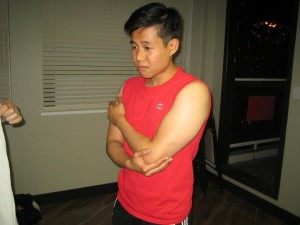Even though overuse injuries typically occur among adults, these injuries can also occur among children. For parents, it is important to be familiar with the common overuse injuries in children.
Strains and sprains
The soft tissues such as the ligaments, tendons and muscles can be injured due to overuse. Any sports activity can cause strains and sprains. Rest and intake of non-steroidal anti-inflammatory drugs can help relieve the pain caused by strains and sprains. Restoring strength and mobility is important by undergoing physical therapy.
Stress fractures

Stress fractures are also common overuse injuries in children. This occurs once the muscles are fatigued and transfer the overload to the bones. In case a child engages in an activity vigorously and substantial stress is applied on the bones, the body could not build up bone at a quick rate. In no time, the bone fails and a small crack develops.
The constant force that results to a stress fracture is not strong enough to cause an acute fracture. Majority of stress fractures occur in the bones that bear weight in the foot and lower leg. The injury typically results from an abrupt increase in activity.
Always remember that stress fractures usually need 6-8 weeks to heal properly. During that period, the child could not join in the activity that caused the injury. A brace or a cast might be applied in order to rest the damaged bones during the healing process. In case the activity that caused the injury is suddenly continued, larger stress fractures can occur.
Sever’s disease
This is one of the common causes of heel pain among children. This often occurs during the stage of adolescence in which children undergo the growth spurt. This condition is also called osteochondrosis. It is the inflammation of the growth plate in the heel bone. Activities such as jumping or running can cause constant stress on the growth plate once the foot hits the ground. As a result, inflammation develops in the growth plate and causes heel pain.
The initial treatment for Sever’s disease is rest until the pain disappears. Additional treatments include:
- Stretching exercises helps minimize stress on the heel.
- Use heel pads for absorption of impact as well as relieving stress on the heel and ankle.
- Non-steroidal anti-inflammatory drugs to reduce the pain and swelling.
Throwing injuries involving the elbow
Among children, the elbow can be damaged due to repetitive throwing, especially in baseball. Children who participate in repetitive overhand throwing activities are prone to injuries.
Always remember that an overhand throw applies stress on the growth areas of the immature elbow. If this is overused, it can lead to excessive inflammation of the structures in the elbow such as the cartilage, ligaments and growth plates.
Preventing overuse injuries in children
Majority of overuse injuries in children can be easily prevented. It is important to avoid overdoing a single sport as well as allowing the growing bodies to have adequate rest between the games and practices. You have to take note of specific tips on how to prevent overuse injuries:
- Cut down the number of teams your child is playing. Being part of more than a single team will make the child prone to overuse injuries.
- Encourage your child to play other sports for skill development and prevention of injuries that will likely occur if completely focused on a single sport.
